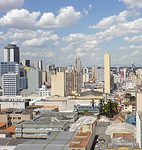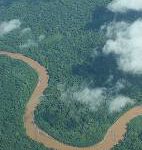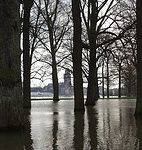Marina Silva will never forget the day the bulldozers rolled up on her family’s doorstep. It was the beginning of the 1970s and in the isolated Amazon community of Bagaço, where she was born, young Marina, then about 12, looked on curiously as work began on a major highway to link the Brazilian rainforest with the rest of the country. Shortly afterwards, her relatives began to die. First two younger sisters, then her uncle and finally her cousin: all victims of a malaria epidemic imported by the road builders.
“I don’t know if I was conscious that the road was bringing all that, but it made me write on my own flesh the consequences of what it meant to mess around with nature without giving the slightest attention to the need to look after it,” she remembers.
Fast-forward to January 2003. Following the historic election of Brazil’s first working-class president, Luiz Inácio Lula da Silva, Marina Silva was named the environment minister of South America’s largest country, thrusting this former rubber tapper, who was virtually illiterate until her teens, onto the front line of Brazil’s battle against deforestation — and of the global fight against climate change. Environmental groups rejoiced at her nomination. She was a woman from the forest, who understood the dangers inherent in destroying it.
In May 2008, however, the fairytale came to an abrupt end. After just over five years as environment minister, Silva resigned following a succession of acrimonious disputes with fellow ministers and businessmen who accused her of stalling major development projects in the Amazon and hindering the Brazilian economy. In her short resignation letter, Silva cited “the growing resistance found by our team in important sectors of the government and society”.
The same groups that had heralded Silva’s rise to power immediately opened fire on the government. “It’s time to start praying” for the rainforest, said Sergio Leitao, the director of public policy for the environmental organisation Greenpeace in Brazil, claiming the government had “now made it clear that the idea of development at any cost is what will win out”. Lula responded by insisting that his government would not stray from its quest to protect the Amazon and appointed another high-profile environmentalist, Green party founder Carlos Minc, as his new minister.
But aside from Silva’s numerous enemies in the world of agri-business, few believe her departure bodes well for the future of the world’s largest tropical rainforest. So why did she walk away? And what does her dramatic exit mean for the future of the Brazilian Amazon and, indeed, for the rest of the world?
Interviewed a week after her May 13 resignation, a weary-looking Silva, age 50, was unable to pinpoint a single cause for her decision. “Throughout these five years, I faced numerous moments of great tension but they did not mean that the actions I was implementing lost strength,” she says. However, the situation changed. “At this moment, in my perception, I had lost the strength to carry on doing these things."
In her third-floor apartment in the capital, Brasília, surrounded by half a dozen giant, multicoloured orchids sent by well-wishers, Silva looks as busy as ever. She clutches a handful of documents, eyeing them repeatedly between questions. She is careful not to name names but leaves little doubt as to why she abandoned the government of Lula, a longtime friend and ally from Brazil’s Workers Party, whom she has known for 30 years.
“I realised that I was no longer in a position to stabilise what had already been achieved and to carry on expanding these achievements,” she says.
Silva’s resignation is the story of a conflict between two very different Brazils. In one corner are the farmers, businessmen and ordinary Brazilians who see the country’s vast natural resources as a sure route to economic success. In the other are the environmental activists, indigenous groups and concerned spectators who believe that Brazil’s march to economic greatness will mean the continued devastation of its rainforest and its peoples. Silva attempted to tread a path between the two visions, trumpeting the idea of sustainable development. This, she said, would provide better living conditions for the 25 million people in the Amazon region without obliterating the rainforest itself.
“There is no longer a way of thinking about growth for growth’s sake,” she argues. “Growth is important, but it needs to be growth with development and sustainability, in all of its senses: social, environmental, economic, cultural.”
But walking this tightrope was never going to be simple, even for the notoriously resilient Silva, who frequently cites South Africa’s Nelson Mandela as one of her inspirations.
Maria Osmarina da Silva was born in 1958 in a community of rubber tappers called Seringal Bagaço — deep in the western state of Acre — not far from Brazil’s border with Bolivia. The nickname Marina stuck immediately. One of 11 children (three later died), she was orphaned at 16 and moved to the state capital, Rio Branco, where she received a Catholic education and worked as a household maid.
Heavily influenced by liberation theology, she graduated in history from Acre’s Federal University at age 26 and became increasingly politically active. In 1984 she helped create Acre’s first workers’ union.
From an early age, Silva was considered a guerreira, a battler, overcoming numerous episodes of tropical diseases such as malaria, and later mercury poisoning. At 35, she was elected as the youngest female senator in Brazil’s history. She became a household name, famous for her shrill but powerful voice and unflinching defence of the Amazon. She converted to evangelism and in 1994 became a missionary for the Pentecostal church Assemblies of God. She also gained growing international exposure, winning a succession of awards for her environmental work. When Lula was piecing together his first cabinet, her name was reportedly top of his list.
It was a crucial moment: from 2001 to 2002, 26,000 square kilometres (10,000 square miles) of rainforest had been lost. Illegal logging was spiralling out of control. A 40-year assault, led by an unholy trinity of loggers, ranchers and, more recently, soy farmers had destroyed an estimated 20% of the Brazilian Amazon.
In August 2007, however, the government celebrated a 30% drop in rainforest destruction from 2006 to 2007 — the result, they said, of an ambitious plan launched in 2004. While many argued that the drop owed more to a fall in global commodity prices, the government was euphoric. Silva hailed the news as “a great achievement for Brazilian society”.
But the fault lines between Silva and other sectors of the government were becoming increasingly clear, most strikingly in relation to an economic growth plan unveiled in early 2007. Designed to help propel Brazil towards the same level of economic growth as Russia, India and China, it proposed the construction of two massive hydroelectric dams in the Amazon. Activists claim the dams, which were eventually given the green light, will displace thousands of people. Silva resisted the plans. Powerful backers of the scheme accused her of deliberately delaying environmental licences.
In January 2008, the tensions grew, following the release of satellite images, produced by the government, which showed a sudden spike in deforestation. Silva called a press conference, at which she blamed the destruction in part on soy farmers clearing more land for their crops. Her comments are reported to have infuriated Lula. Silva described the rise in deforestation as a “cancer”; Lula rebutted, saying it was an “itch”, at most a “little tumour”. It was becoming obvious that something had to give.
In mid-May, in a move widely seen as a snub to Silva, Lula placed Roberto Mangabeira Unger — known for his controversial ideas on development and industrialisation — in control of a new sustainable development scheme for the Amazon. Simultaneously, several Amazonian politicians, among them Blairo Maggi, one of the world’s leading soy producers, mounted a lobby to overthrow measures that banned banks from loaning money to fund projects in areas of illegal deforestation.
“This was the last straw,” says Sergio Leitao of Greenpeace. “How many times was she forced to back down? She didn’t want to be responsible for this and so she said: ‘Not on my watch’.”
Following her resignation, however, Silva is upbeat about what her ministry achieved. She talks of an environmental awakening in Brazil and around the world, “a new political pact with society that wants Brazil to develop but with the preservation of the Amazon, the Atlantic rainforest, the savannah and of all our water reserves”. She is also adamant that this engagement has enabled a crackdown on the illegal loggers.
“Without the support of society it would have been impossible to have put 600 people involved in environmental crimes in the Amazon in jail,” she says. “This is something that is achieved by a new social pact that is appearing inside and outside of the country.”
While supporters have described her exit from power as a defeat for the green cause, she insists that progress is being made. “Twenty years ago, there were politicians who promised chainsaws to their voters to win elections … Now we have a resolution that says neither public nor private banks can fund projects in an area that is being illegally deforested.”
On visits home to Rio Branco, as she gazes down from her plane at the sprawling Amazon jungle below, Silva will hope and pray that, with a number of giant infrastructure projects planned in the region, history is not about to repeat itself.
“Today we are living through the challenge of prevention, of looking twice before doing something, discussing twice before doing something — because each thing that we alter can lead to … dramatic consequences,” she says. “Those who celebrated the industrial revolution never thought that we were injuring the planet, almost fatally. We didn’t have this knowledge. Today we know.”
Copyright Guardian News and Media Limited 2008
Homepage photo by visionshare



